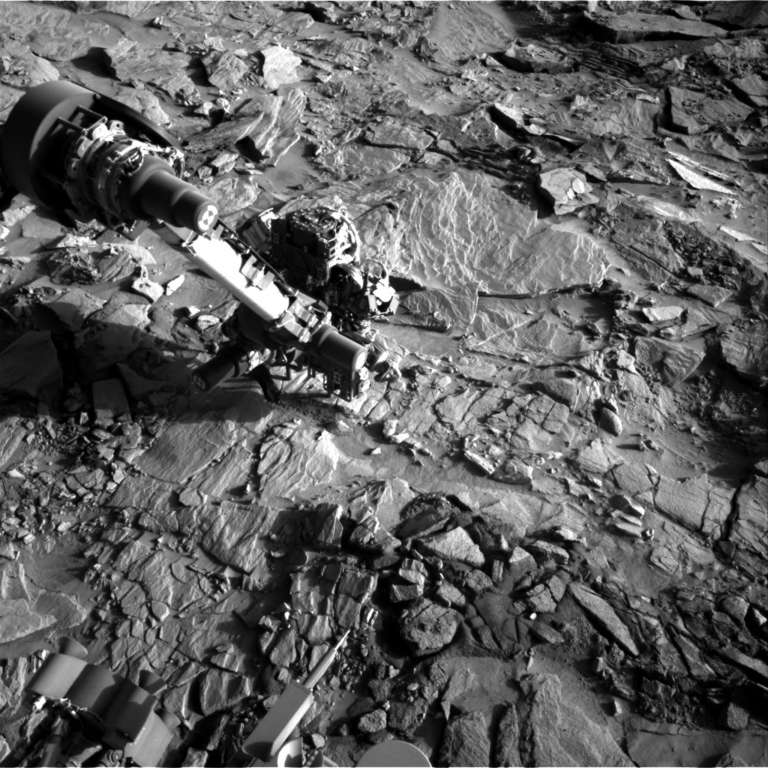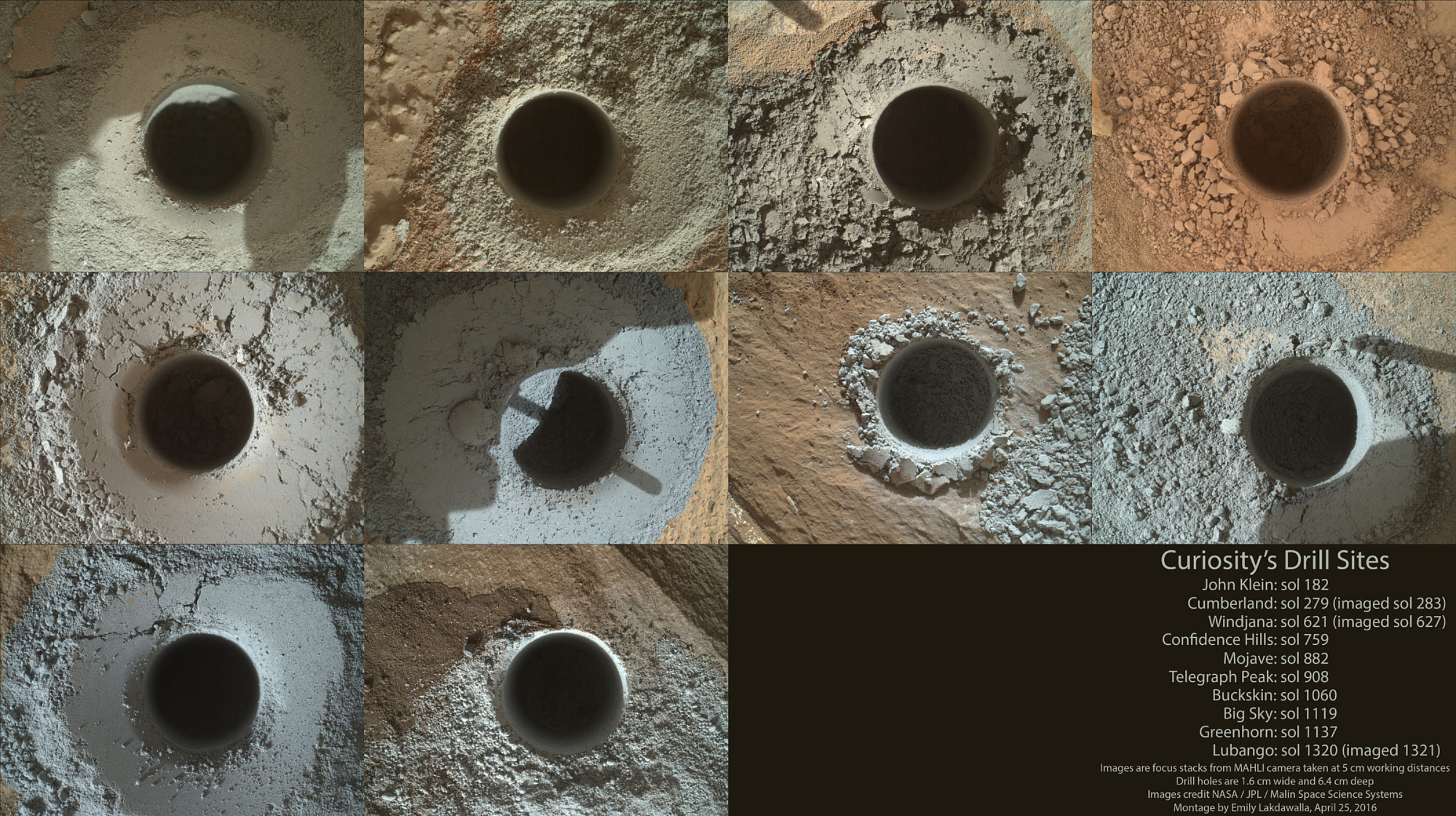Emily Lakdawalla • Apr 25, 2016
Quick Curiosity update, sol 1320: "Lubango," the 10th drill site on Mars
Curiosity has drilled into Mars for the 10th time at a site named Lubango, on sol 1320 (April 23, 2016). Lubango is in a bright-toned halo around a crack in the Stimson sandstone unit on the western edge of the Naukluft Plateau. It will likely soon be followed by an 11th drill hole in relatively unaltered Stimson farther away from the fracture.
The bright-toned fracture runs left to right across this Navcam view of the drill placed on the rock, the completed drill hole underneath it:

They pointed MAHLI at it the next day, sol 1321. There's quite an interesting variety of dirt colors in here. It looks like the dirt that was initially moving across the top of the rock was relatively dark-colored, but once the drill bit into the rock it was very bright. I like how you can see the impressions of the two grippy fingertips of the drill contact sensors/stabilizers to the upper right and lower left of the drill hole.

This drilling operation proceeded super fast. They compressed most of the drilling process into a single week of work! They decided to drill at Lubango on Monday (sol 1316) and drove over to the site, doing preparatory imaging; did a final bump to drilling position on sol 1317; brushed on sol 1318, with MAHLI imaging and APXS analysis on sols 1318 and 1319; did a drill pre-load test on sol 1319 to make sure the rock was stable for drilling; and proceeded directly from there to a full drill on sol 1320, skipping over the usual mini-drill test. Skipping the mini-drill suggests that the properties of the rock as observed in camera images, ChemCam, and APXS analyses were similar enough to previous drill locations (particularly Greenhorn and Big Sky, the previous in-halo/out-of-halo drill targets), that the team had confidence that the drilling properties of the rock would be nothing unusual, so they proceeded directly to the full drill.
Here's my compilation of all the drill sites on Mars, updated with the new addition. The current plan is to add another drill hole outside a fracture halo as soon as practical. But that won't be immediate. They can't drill again until they have completed processing the Lubango sample and delivering it to Curiosity's two laboratory instruments, Chemin and SAM -- the drill can only handle one sample at a time. They usually deliver to Chemin first to perform X-ray diffraction overnight to get a quick look at mineralogy, which will help inform them whether it's worthwhile to deliver it to SAM for the energy-intensive process of baking and gas chromatograph mass spectrometry. They could decide not to perform a SAM analysis, or they may decide to perform SAM analysis in one or more different ways on different delivered samples, but they have to make the choice now of how many SAM sample cups to commit. Once they've finished any SAM delivery, they have to dump the remaining sample, analyze the dump pile with APXS and MAHLI, and clean and inspect the interior of the CHIMRA sample handling mechanism on the rover arm before they can drill again.

Support our core enterprises
Your support powers our mission to explore worlds, find life, and defend Earth. You make all the difference when you make a gift. Give today!
Donate

 Explore Worlds
Explore Worlds Find Life
Find Life Defend Earth
Defend Earth

